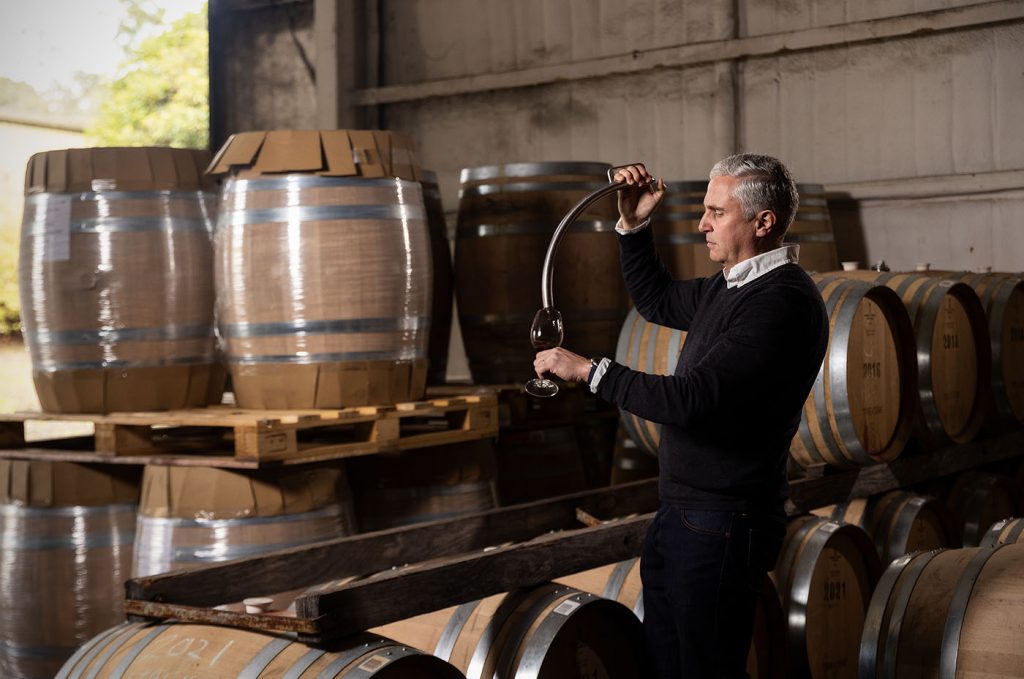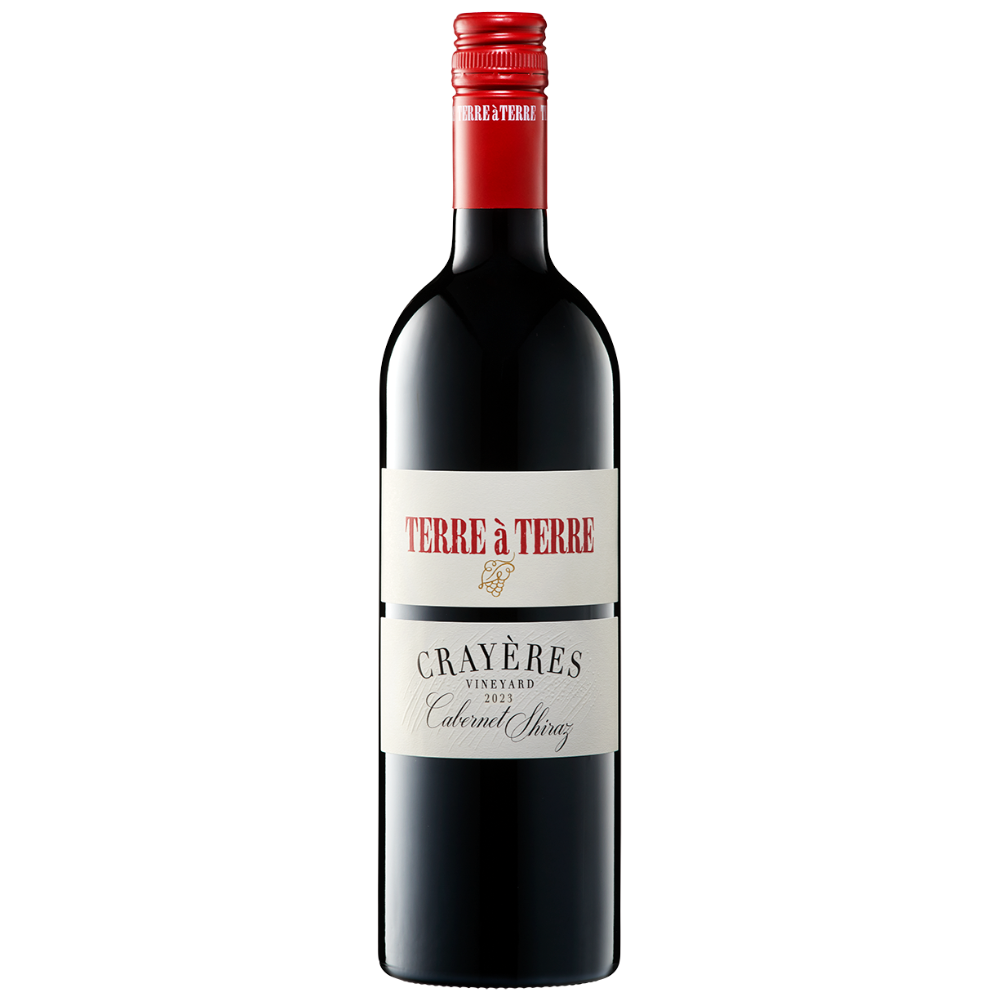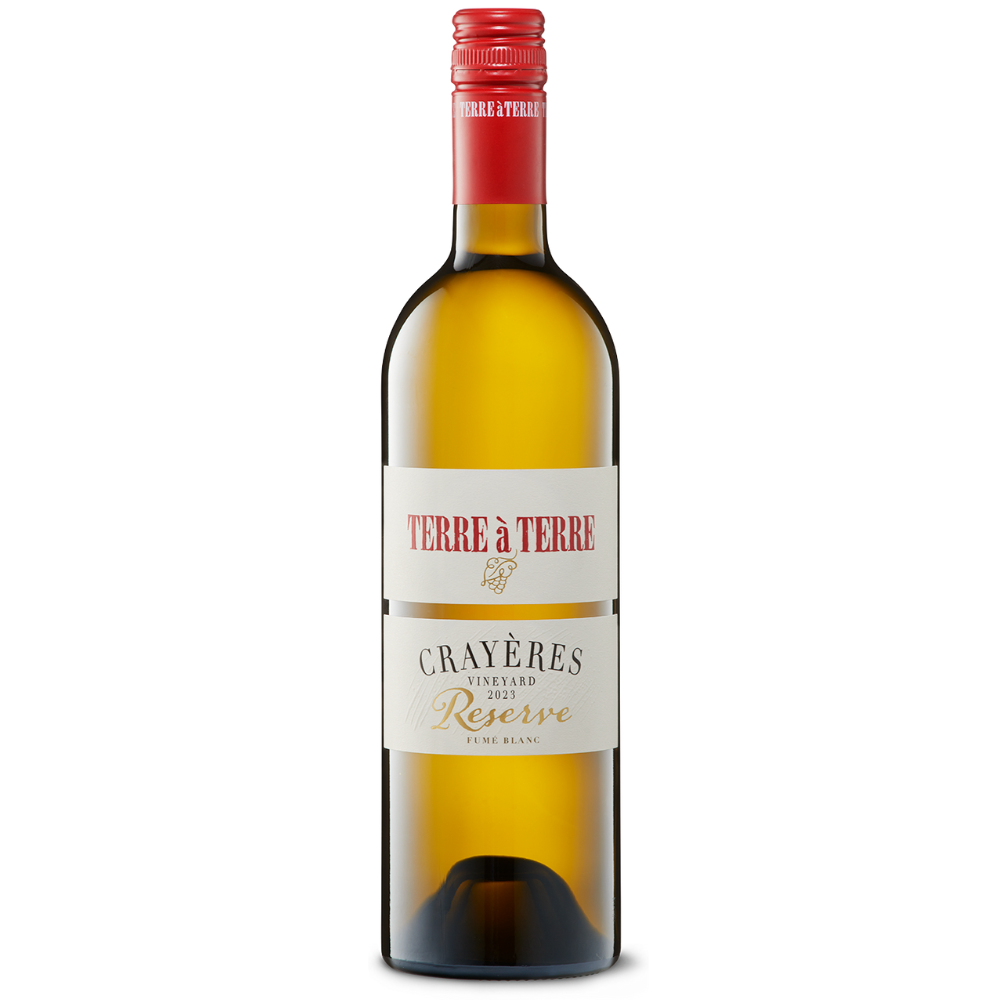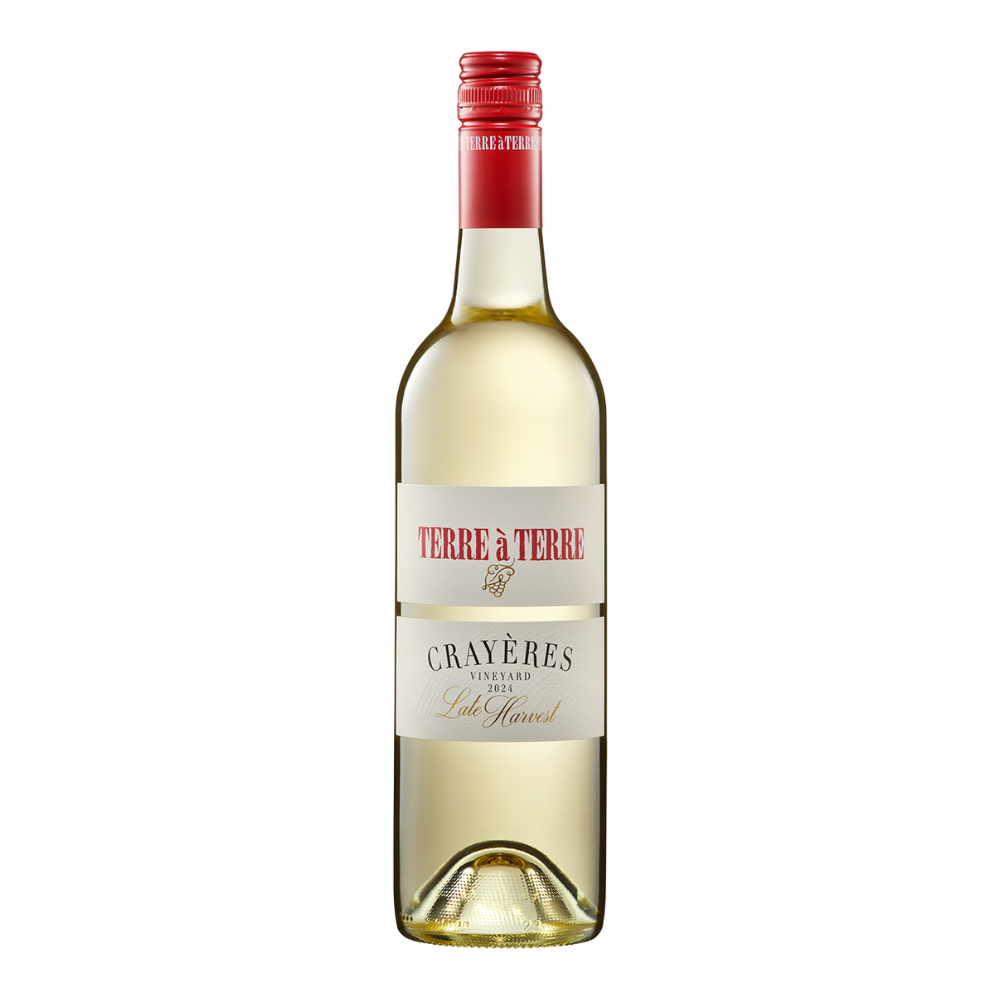TERRE à TERRE
GREAT AUSTRALIAN BLENDS
Terre à Terre makes still wines from our single Crayères vineyard spanning across eight hectares of vineyard in the very unique, cool climate wine region of Wrattonbully. We have been refining our winemaking and blending approach since 2008 of the Crayères Vineyard fruit, culminating with the existing range of white and red wines.
The Crayères vineyard is named for its positioning across ancient limestone caves, with geology dating back 35-million-years old, covered in rich terra rossa soil. The Wrattonbully GI is located just 20km north of Coonawarra and 80km south of Padthaway.
Since 2011, we have been experimenting with winemaking styles best suited to the Crayères Vineyard to ensure we are best representing our high-quality fruit and the distinctive terroir. With our whites, we make barrel aged Sauvignon Blanc, giving us a textural and layered style reminiscent of some of the best white Bordeaux. For our red wines, we grow and make ripe harvested Cabernet Sauvignon and Cabernet Franc, utilising Shiraz as a blending component with each variety giving balance and completeness- particularly inspired by the long tradition of claret blends. We use a restrained level of oak to allow terroir and varietal character to shine through.

Our precision in the management of the Crayères Vineyard, combined with our 18 years of experience within the ecosystem of this very unique vineyard, allows us to produce exceptional fruit.
The cool climate of the Wrattonbully region is reflected from vine to bottle and our winemaking decisions are to support and encourage terroir to be reflected in the wines. All of our fruit is handpicked and delivered to the Tapanappa winery in the Piccadilly Valley for processing.
IN THE WINERY
We make two wines from our Crayères Vineyard Sauvignon Blanc fruit. Firstly, the very best parcels of fruit goes into our Crayères Vineyard white which is whole bunch pressed and fermented in seasoned 600L oak demi-muids. Our second Sauvignon Blanc, Down to Earth, is crushed and destemmed, then fermented partially in old oak and partly in stainless steel to enhance its youthful vibrancy.
For both wines, sulphur is added at the end of fermentation to inhibit malolactic fermentation, and the wine rests on lees for 6- 9 months before bottling with a light filtration.
For our red grape production; the Cabernet Sauvignon, Cabernet Franc and Shiraz are all harvested at full ripeness and processed separately. They are crushed and destemmed, and the must is fermented either in larger open top fermenters with boards to keep the cap submerged (called potters), or in smaller 1 tonne fermenters with daily plunging to keep the cap submerged. In select years, we add some whole bunches only in select years to the Cabernet Franc fermenters. After the end of fermentation, the wine is pressed off skins and put into tank to go through malolactic fermentation. At the end of the malolactic fermentation, the wine is racked into oak barriques. After 6-12 months ageing in barriques, the wines are racked to old, large, oak Foudres (4,000L) where they age for a further 6-12 months. After a light egg white filtration, the wines are racked off oak, ready for blending and bottling.
WINE STYLES
We now have over 12 years of experimenting with the fruit from our Crayères Vineyard and have determined that the best wine styles for the vineyard are:
- Our barrel aged and textural Sauvignon Blanc, harvested late, which is reminiscent of some of the best white Bordeaux;
- Our Cabernet Sauvignon and Cabernet Franc-based Shiraz blends, which follow the long tradition of blending Shiraz and Cabernet in South


IN THE VINEYARD
IN THE WINERY
WRATTONBULLY
The Australian Geographical Indication (GI) “Wrattonbully” was entered in the Register of Protected Names on 5 July 2005 – (MAP) and is contained within the much larger Limestone Coast GI (which was entered in the Register of Protected Names on 27 December 1996).
As such, Wrattonbully is considered a newer wine region of Australia. However, the first plantings in Wrattonbully date back to 1969, when 11 hectares were planted by the Penders, including 4 hectares of Shiraz, 4 hectares of Cabernet Sauvignon and 4 hectares of Chardonnay. This was followed by John Greenshields, with his Koppamurra Vineyard in 1974, where he planted 4 hectares of Cabernet Sauvignon. This particular vineyard has since been bought by Tapanappa and re-named the Whalebone Vineyard, and is situated just across the road from the Terre à Terre vineyard.
Wrattonbully has increased significantly in size since its early plantings and now comprises around 2,600 hectares of vineyards, most of which is Cabernet Sauvignon.
The Wrattonbully terroir is very similar to the Coonawarra terroir in that it has limestone ridges covered by terra rossa soils. However, the vineyards in Wrattonbully are located east of the Kanawinka Fault, and are more elevated than the coastal plains vineyards, as well as being on much older limestone and much older soil sediments (35 million-years-old vs. 800,000 years-old for Coonwarra). The climate in Wrattonbully is very similar to Bordeaux with heat summations of 1,350 degree days during the growing season.
GEOLOGY & SOIL
The Crayères 8-hectare vineyard block was purchased in 2004. It sits on the crest of a north-south 35-million-year-old Oligocene limestone ridge covered by terra rossa soil. On its eastern flank, a layer of Bridgewater eolian sands covers the ancient terra rossa soil. While ripping the vineyard block before planting, the entrance to a limestone cave network was discovered. Hence we have given the vineyard the name of Crayères (Crayères, from craie – limestone in French – is the local name of the underground network of caves that are found in the Champagne wine region). The Crayères cave contains the undisturbed fossilised remains of ancient megafauna that are unique in the world, and which will be the subject of extensive research in the near future.
CLIMATE
We are in the process of collecting long-term data in the vineyard. Crayères Vineyard Growing season (October to April) heat summation – base 10°C days.
| (all in °C) | Avg | 2016 | 2017 | 2018 | 2019 | 2020 |
|---|---|---|---|---|---|---|
| Wrattonbully (Joeville), CliMate data | 1466 | 1881 (+28.3%) | 1585 (+8.1%) | 1799 (+22.7%) | 1629 (+11.1%) | 1494 (+1.9%) |
VINEYARD BLOCKS
Sauvignon Blanc
The 2-hectare Sauvignon Blanc block was planted in 2004 on sandy loam over terra rossa soil, on the crest of a north-south oriented 35 million-year-old limestone ridge in the heart of the Wrattonbully wine region. A further 1 hectare of Sauvignon Blanc was planted in 2013.
French clones were used, grafted onto 101-14 rootstocks. The vines were planted at a density of 4,444 vines per hectare, 1.5m x 1.5m, making it the closest spaced Sauvignon Blanc vineyard in Australia.
The fruiting wire is only 50cm above ground, earning the vines the nickname of the “low vines” amongst the local winemaking community.
Cabernet Sauvignon
The 3-hectare Cabernet Sauvignon block was planted in 2004 using the same layout as the Sauvignon Blanc (at 4,444 vines per hectare). Australian clones were used (CW44 and Reynella). The Cabernet Sauvignon vines are planted on the western flank of the Terre à Terre vineyard, where the soil is pure terra rossa over 35 million-year-old limestone rocks.
Cabernet Franc
The 1-hectare Cabernet Franc block was planted in 2008, alongside the Cabernet Sauvignon. The vineyard was planted with cuttings from the Whalebone vineyard and also some French clones, all grafted on to rootstocks. The Cabernet Franc was planted at a density of 4,444 vines per hectare.
Shiraz
The 1-hectare Shiraz block was similarly planted in 2008, alongside the Cabernet Franc. The block was planted with grafted cuttings from recent clonal selection material made by the Yalumba nursery from cuttings retrieved from old Barossa and Eden Valley vineyards. The density is 4,444 vines per hectare.








